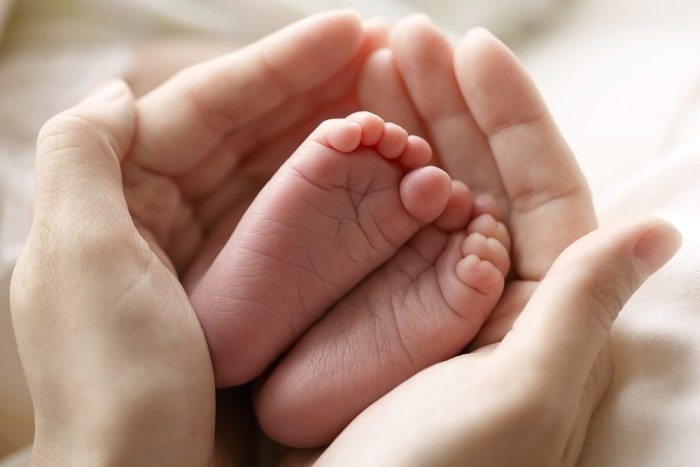First Baby Born From Transplanted Uterus
Earlier this year, a team of Swedish doctors announced the successful transplant of uteruses into nine women who hoped to become pregnant. Now, the first baby to be carried in one such womb has been born.

Vincent, a baby boy born last month to an unidentified Swedish woman, is the first baby in the world to come from a transplanted uterus. Though Vincent’s mother, 36, was born with functioning fallopian tubes, she did not have a complete uterus because of a condition called Mayer-Rokitansky-Kuester-Hauser (MRKH). As a result, she would not have been able to become pregnant without the medical intervention of a team of Swedish doctors. While Vincent’s birth is a joyful personal occasion for his parents, it also raises ethical questions about taking such extreme medical measures to become pregnant and carry a child.
As Rewire reported at the start of the year, the team experimentally began transplanting uteruses into nine women who hoped to become pregnant in 2012. By this January, the women had begun to menstruate, meaning their wombs appeared ready to receive and to incubate an embryo. The transplant surgery did not attach the women’s fallopian tubes (if they had them) to their new uteruses, so spontaneous pregnancy was not possible. Instead, before the surgery, doctors harvested eggs that could then be used for in vitro fertilization.
Doctors initially reported that all nine women were doing well; they suggested that there had been a few minor infections, but no need for additional surgeries or stays in intensive care. In the nine months since, however, two women have had to undergo hysterectomies to remove the donated uteruses, one because of chronic infections and the other from clotting problems. The medical team has also announced that some of the other women are more than 28 weeks pregnant, but they have not said how many.
Vincent’s mother, like all recipients of donor organs, has to take anti-rejection drugs in order to make sure her immune system does not attack the new uterus. During her pregnancy, the mother took a cocktail of three immunosuppressant drugs (including tacrolimus, azathioprine, and corticosteroids); still, she experienced three rejection episodes, which were treated with additional corticosteroids. These drugs are known to have side effects and may cause long-term health problems, which is why the uterus transplants are not permanent—the donor organs will be removed after no more than two pregnancies. Vincent’s mother, who received her uterus from a 61-year-old family friend who had gone through menopause seven years earlier, now has to decide if she wants to stay on the drugs and try for another baby.
Vincent himself was born by cesarean section in the 32nd week of pregnancy after his mother had begun to show signs of preeclampsia, a dangerous (but relatively common) condition that causes a woman’s blood vessels to constrict, in turn causing high blood pressure and reducing blood flow to a woman’s organs. He weighed 3.9 pounds at birth, which is low but typical for babies born at that early gestational age.
Overall, the doctors who performed the transplant and cared for the mother during pregnancy are very pleased with the outcome. Dr. Mats Brannstrom, the leader of the researcher group, told the Daily Telegraph, “There were concerns that the blood supply may be compromised since we had reattached the blood vessels to the womb. But we did not notice anything unusual concerning the function of the uterus and the foetus, and the pregnancy followed all normal curves.”
In an interview with NPR in August, Brannstrom said he became interested in the idea of uterus transplants when telling a cervical cancer patient after a hysterectomy that without a uterus, she would not be able to carry or deliver a baby. The patient asked why she couldn’t simply get a uterus from her sister or mother, the way one would get a kidney from a relative. Eventually, Brannstrom said, he realized the idea had merit. After Vincent’s birth, he told the Daily Telegraph, “It gives us scientific evidence that the concept of uterus transplantation can be used to treat uterine factor infertility, which up to now has remained the last untreatable form of female infertility.”
Some, however, question whether this is one step too far in science’s quest to help couples experiencing infertility. The transplant surgery is difficult for both the donor and the recipient: the removal process, for example, takes ten hours and requires the excision of more tissues and vessels than a radical hysterectomy so that both can be attached to the recipient.
Additionally, some fertility experts believe that it is one thing to ask a relative or friend to give you a kidney when you are facing a life-threatening illness, but another to ask them to go through such an invasive procedure when there are other ways, such as surrogacy, to bring a biological child into the world. Others also suggest that the risks to the woman receiving the uterus—especially the risks from long-term use of anti-rejection drugs, which include diabetes, high blood pressure, swelling, and certain cancers—are too high to justify the goal of carrying a fetus within one’s own body.
These concerns, however, may simply be overshadowed by the birth of healthy children who would not otherwise have been possible. Though the parents’ identities were not released, the Associated Press talked to Vincent’s father via telephone. He said, “It was a pretty tough journey over the years, but we now have the most amazing baby. He is very, very cute, and he doesn’t even scream, he just murmurs.”
Brannstrom was even more effusive; he told AP, “The baby is fantastic. But it is even better to see the joy in the parents and how happy he made them.” He added that it was “still sinking in that we have actually done it.”
